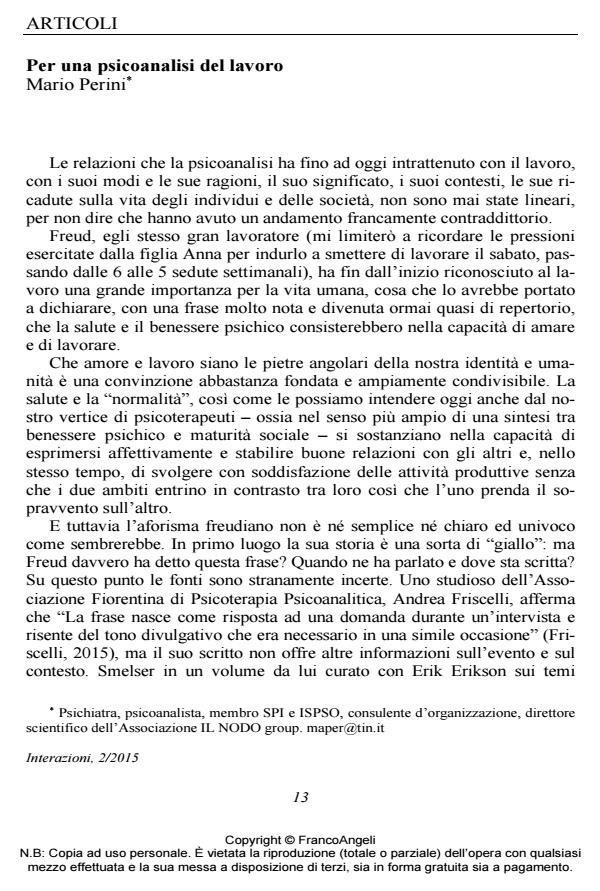Towards a psychoanalysis of work
Journal title INTERAZIONI
Author/s Mario Perini
Publishing Year 2016 Issue 2015/2
Language Italian Pages 21 P. 13-33 File size 88 KB
DOI 10.3280/INT2015-002002
DOI is like a bar code for intellectual property: to have more infomation
click here
Below, you can see the article first page
If you want to buy this article in PDF format, you can do it, following the instructions to buy download credits

FrancoAngeli is member of Publishers International Linking Association, Inc (PILA), a not-for-profit association which run the CrossRef service enabling links to and from online scholarly content.
After discussing Freud’s concept of a "capacity to work", the article reviews various contributions on the issue of work by some psychoanalytically oriented scholars, while also suggesting hypotheses on the motives why psychoanalysis has been showing for such a long time very little interest in this matter, except for the cases of Bion, Jaques, Déjours and few others. The article continues by addressing the dilemma between the dimensions of doing and thinking, and ends with some observations on the role of emotions, anxieties and defenses in shaping the work climate and dynamics in groups and organizations, wishing for a psychoanalytically inspired sociology which may not only fill the gap in the current theoretical body, but also build new tools in order to make workplaces healthier and safer environments.
Keywords: Psychoanalysis, work, workgroup, organization
Mario Perini, Per una psicoanalisi del lavoro in "INTERAZIONI" 2/2015, pp 13-33, DOI: 10.3280/INT2015-002002